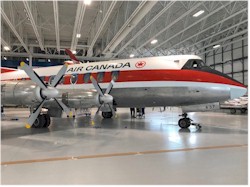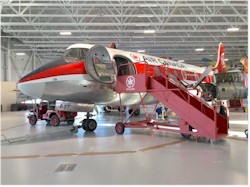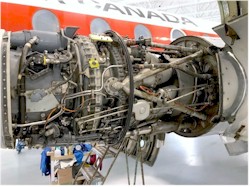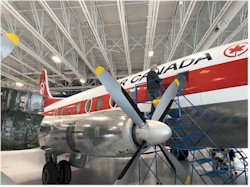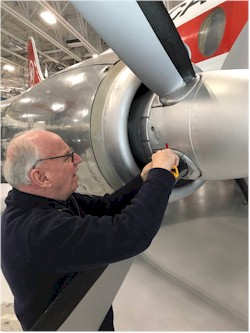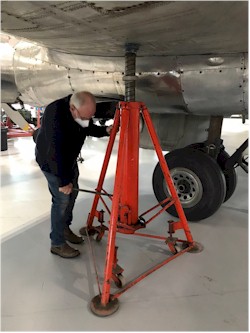|
Lord W. Eric Watt shares this information and photos - I visited the Pima Air and Space Museum (PASM) in Tucson Arizona, where I live. As a former Air Canada employee, I am always struck by the sight of a former TCA aircraft on display. Here is where the very first Vickers Viscount delivered and flown by TCA rests. CF-TGI, Fin # 601, now registered as N22SN, sits in the Tucson Arizona sunshine. It is locked up tight in the condition it was donated. One wonders why? It was the 1st turbine powered aircraft to fly commercial revenue service in both Canada and USA, when it departed Toronto for New York with 40 passengers. As the very first Viscount in North America, delivered for Trans-Canada Air Lines…as the first turbine powered airliner in North America…one would think that some aviation enthusiasts in Canada would want to repatriate and refurbish it in TCA colors, placing it indoors, out of the Tucson sun. In the meantime, as a Pima Air and Space Museum member…I will visit it often. I encourage everyone to visit…and imagine it in TCA colors. |
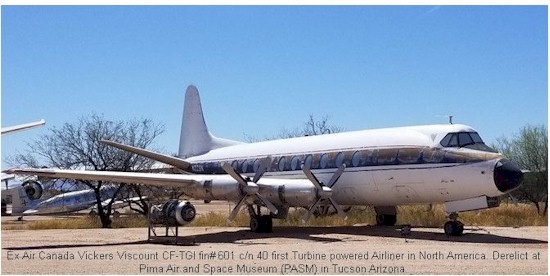 |
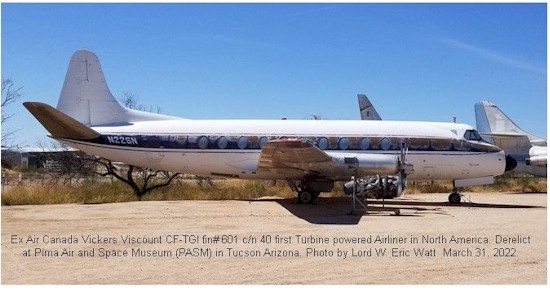 |
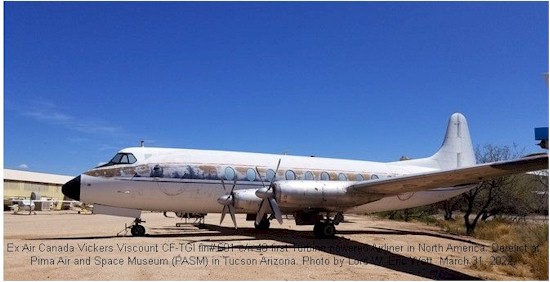 |
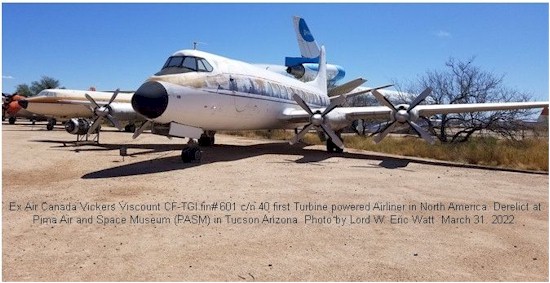 |
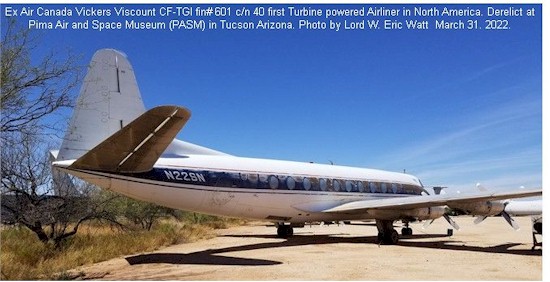 |
|
"I had spent around 50 hours inside the Bristell B23 within the past year, and the week before I finally passed the skill test and received a sheet of paper with the delightful title 'temporary permission to exercise the following privileges'. Before starting my pilot training, I had just completed the demanding three-year training to become an air traffic controller for Skyguide in Switzerland. Working in aviation has always been Nadja's childhood dream. In 2018 she started training to become an Air Traffic Controller." After a year of studying and simulator sessions, she received her ATC student's license and began to work at the tower and approach frequencies of Bern airport. Two years later she finally became a licensed air traffic controller. Ever since then, she has spent most of her time getting her private pilot's license. In the few hours she is not at the airport or in the air, Nadja enjoys playing the guitar and going to the gym. Source: Air Facts Journal |
|
Jean-Paul Provost shares this information - In NetLetter #1484 the ICAO Military Alphabet is mentioned. Although many reasons are given for the choice of 'Québec' for Q in the alphabet, I believe that Quebec was chosen because the alphabet was created at the ICAO HQ located in Montreal in the province of 'Québec'. ICAO HQ and IATA HQ are both located in Montreal. All the rules and regulations of world airlines (passengers and cargo) have been written in Montreal ever since the beginning of commercial airlines. Regards, Jean-Paul Provost Editors' Note: Ken Pickford, of our NetLetter team, shares this information - There were multiple spelling alphabets used by various military, government and civil bodies. 'Québec' was used for Q in some of them as far back as the 1920's, including for aviation purposes. 'Queen' was also used in some versions. Scroll down to the tables in the following detailed Wikipedia articles (links below) and you will see where Québec was used for Q long before ICAO and IATA were created. ICAO was closely involved in developing today's version which wasn't officially adopted by the U.S. military and NATO until 1956, after some changes by NATO. There's also a link to an article on the subject in the ICAO website. References: en.m.wikipedia.org/wiki/NATO_phonetic_alphabet en.wikipedia.org/wiki/Allied_military_phonetic_spelling_alphabets |
|
Larry Harris has shared this interesting story for our readers. It can be called the 'Saga of the Million Miler'. How many miles can a million miler mile if a million miler could mile miles? Just so you remember, a 'Million Miler' was that envelope used to send papers from station to station. While stationed in Kelowna (YLW) for Pacific Western I would occasionally be required to bundle up all the million milers we had received and send them back to the YVR mail room. On one occasion I found a couple that were 99% used so I kept them and calculated how many miles these million milers had miled. To my surprise both of them had only gone 6 to 7 thousand miles. So, why do they call it a 'Million Miler'. Beats me, Larry Harris |
|
In NetLetter #1404, Robert Arnold gave us an update on Vickers Viscount CF-THS. Here is a follow-up of the preparation for its new home at the Royal Aviation Museum of Western Canada. Well, as you can imagine, over the past few months or so I’ve been quite busy on the Viscount getting it ready for opening day May 19, 2022. Needless to say, it’s been a bit of a slog uphill, as Mother Nature wasn’t all that kind to our Viscount while it was in storage. There were a few surprises that were discovered after being in outdoor storage for the past three years. When the Viscount was finally brought inside the new museum facilities on December 10, 2021, a small team of volunteers went hard at it as they began cleaning the three years of dirt and grime that had built up while discovering all the weather-related issues along the way. The majority of damage was inside the cabin. This mostly included a cracked bulkhead wall and some of the paneling that covered the vestibule and lavatory doors. These were the big issues. The good news was only one wall was found in bad shape while the other three were okay.
|
|
Photos of the preparation. |
|
Dave Peters hard at work removing the stubborn baked on UV film. This took several weeks to complete. |
|
|
|
Robert W. Arnold Viscount Project Manager, Royal Aviation Museum of Western Canada Winnipeg, Manitoba, Canada |
|
Jack Morath alerted us to the fees in place at LHR, referred to NetLetter #1484, and decided to pass along how he operates - We pick up and take our three grandchildren a few times during the year either two or three of them. Recently we paid the £5 for dropping them off. Picking them up is more expensive as I believe you have to use the car park. What we have done is be in mobile phone contact with the children when they arrive while we are outside of the airport. They take the shuttle bus to the Long Stay Car Park for that particular Terminal and we organise it so that we will arrive at the car park the same time as the children. We are now allowed half an hour free car parking which enables us to drive out within that time and hasn't cost us anything. You can do the reverse by taking them to the Long Term car park and drop them off there. The shuttle bus runs every ten minutes or so between that Car Park and that particular terminal. Again costing nothing. Jack |



